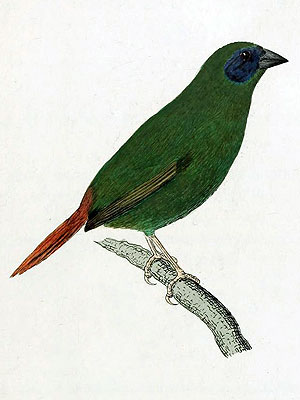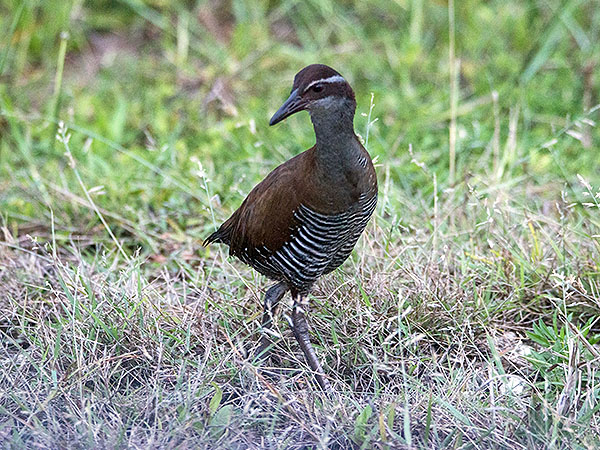Mariana Parrot Finch (Erythrura sp.)
The Mariana Parrot Finch is known only from a subfossil humerus that was recovered from deposits on the island of Rota in the Mariana Islands; this single bone can be referred to that genus based on several characters but is larger than that of any congeneric species.
The species may have reached a length of about 15 cm, making it one of the largest members of its whole family; it was very likely most closely related to the Blue-faced Parrotfinch (Erythrura trichroa (Kittlitz)) (see depiction), a species that still occurs in parts of Micronesia today. [1]
*********************
References:
[1] David W. Steadman: Extinct and extirpated birds from Rota, Mariana Islands. Micronesia 25(1): 71-84. 1992
*********************

Blue-faced Parrotfinch (Erythrura trichroa)
Depiction from: ‘F. H. von Kittlitz: Über einige noch unbeschriebene Vögel von der Insel Luzon, den Carolinen und den Marianen. Mémoires présentés à l’Académie Impériale des Sciences de St. Petersbourg par divers Savants et lus dans ses Assemblées 2: 1-10. 1835’
(public domain)
*********************
edited: 09.11.2021


